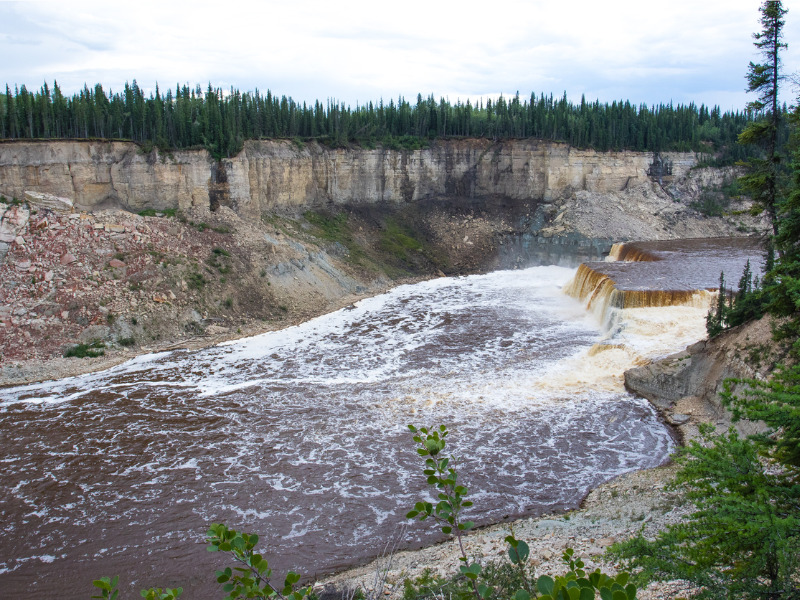Heavy flooding forces residents of Northwest Territories town from their homes

HAY RIVER, N.W.T. – About 3,500 residents have been ordered to evacuate a town in the Northwest Territories as volatile water levels never before experienced in some areas cause extensive flooding and damage.
People in Hay River, on the south shore of Great Slave Lake just north of the Alberta-N.W.T. boundary were told late Wednesday to get to higher ground, travel to Yellowknife or register at the town’s community centre.
“Some had very little warning and had to react quickly to stay safe, while leaving their home, their possessions and, for some, their business to endure the water and ice,” Premier Caroline Cochrane and Municipal Affairs Minister Shane Thompson said in a statement Thursday.
“For the past several months, N.W.T. residents and communities have been working hard to prepare for potential flooding this spring. This week, for some, their worst fears were realized as (ice) breakup began and waters started to rise and continued to rise to never-before-seen levels in some areas.”
The town has been monitoring the Hay River, recently swollen by rain and snowmelt. An alert on the community’s website said another push and release of ice had caused the water to rise even higher.
A statement from the territory’s daily update said the water level increased 1.7 metres over the last few days.
“Water levels are extremely volatile right now and impacted by ice in the channel. Rapid changes in water levels are possible,” the update said. “This shift in ice caused water levels to increase rapidly through the Town of Hay River and K’atl’odeeche First Nation.”
The government said it will continue to work with communities, even when the water recedes, to focus on recovery, Cochrane said.
“Until that time, please continue to follow the advice and recommendation of your leaders and emergency responders. The safety of residents is their top priority.
Hay River is known as the “Hub of the North” because it is an important transportation and communications centre. It is the staging point for the shipment of goods further into the territory and heart of the Great Slave Lake commercial fishery.
The N.W.T. government said during a news conference Thursday that no injuries have been reported due to the flooding and there are no missing people. It added some residents have chosen to not leave their homes.
In northern Alberta, approximately 1,100 residents of the Dene Tha’ First Nation have been under an evacuation order since the weekend due to flooding.
“Of the more than 1,100 residents of Chateh, almost all have evacuated, with approximately 50 remaining in the community – many assisting with the response effort,” said Kyle Fournier, a spokesman for Indigenous Services Canada.
The Little Red River Cree First Nation has also been under local emergency alerts due to flooding.
“Initial observations indicate that current flooding is worse than the 2021 flood,” Fournier said.
“Water levels are expected to continue to rise over the next two to three days. Once peaked, it is anticipated that it will take between six to seven days for water levels to drop below minimum thresholds.”
– By Fakiha Baig in Edmonton
This story was produced with the financial assistance of the Meta and Canadian Press News Fellowship.
Feature image by iStock.com/Roman_Makedonsky



